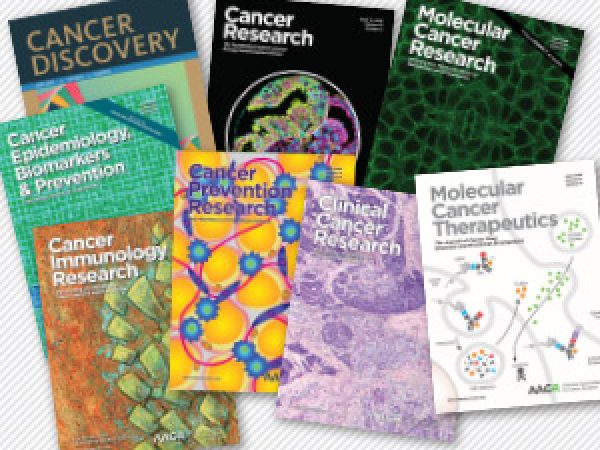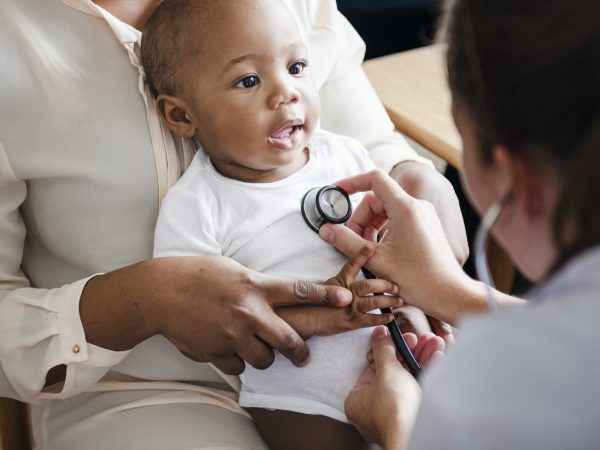AACR COVID-19 and Cancer Virtual Meeting: The Distressing Intersection of the Pandemic and Noncommunicable Diseases
The COVID-19 pandemic has taken an enormous global toll. Worldwide, nearly 15 million cases of the disease have been reported, taking the lives of more than 600,000 individuals. While the United States represents less than 5 percent of the global population, roughly 25 percent of both COVID-19 cases and deaths have occurred in this country.
Though devastating, the deaths from COVID-19 describe only a portion of the disruption that this pandemic has caused. The rapid spread of disease forced many businesses to close—some permanently —and shelter-in-place measures were adopted across the globe. In April of this year, the U.S. unemployment rate soared to 14.7 percent, and a survey estimates that nearly one-third of U.S. residents did not make a full, on-time housing payment in July.
Many hospitals have seen surges in admissions related to COVID-19, with some intensive care units (ICUs) reaching maximum capacity. Further, some patients with life-threatening conditions have chosen not to seek medical care during the pandemic. Data from the Centers for Disease Control and Prevention (CDC) show that emergency department visits for heart attack and stroke dropped by 23 percent and 20 percent, respectively, from March 15 to May 23, 2020, compared with the preceding 10 weeks. Additionally, outpatient doctor visits have declined dramatically since the beginning of the pandemic. While such visits have started to rebound, overall visits are still below normal.
Research indicates that more than 20 percent of the excess deaths seen in the United States between March 1, 2020, and May 30, 2020, are not attributable to COVID-19. Although several factors may have contributed to the underreporting of deaths from COVID-19, strict lockdown measures and delayed access to health care may have accounted for a portion of these excess deaths. Indeed, large increases in mortality related to noncommunicable diseases, such as heart disease and diabetes, were observed between March and April of this year, as reported in JAMA Internal Medicine.
The second day of the AACR Virtual Meeting: COVID-19 and Cancer began with a keynote address by Solange Peters, MD, PhD, from the Centre Hospitalier Universitaire Vaudois (CHUV) in Lausanne, Switzerland. Peters, who is the current president of the European Society of Medical Oncology (ESMO), talked about the “distressing intersection” of COVID-19 and noncommunicable diseases.
COVID-19 and noncommunicable diseases: a deadly interplay

MD, PhD
Many noncommunicable diseases—including cardiovascular disease, type 2 diabetes, and cancer—increase patients’ risk for developing severe COVID-19, according to the CDC. Patients require treatment for these underlying diseases even during the pandemic, stressed Peters. “People living with noncommunicable diseases have become even more vulnerable, becoming severely ill or dying from COVID-19, but also being undertreated specifically for their noncommunicable disease,” she said.
Peters reviewed findings from a rapid assessment survey conducted by the World Health Organization (WHO), which evaluated the disruption of services for the prevention and treatment of noncommunicable diseases among 163 Ministries of Health between May 1 and May 25, 2020. About 75 percent of countries reported disruption of noncommunicable disease services, with over 40 percent of countries reporting that cancer treatments were either partially or completely disrupted.
Research has also indicated a disruption to cancer screening during the pandemic. Data from the electronic medical records vendor Epic found that preventive cancer screenings performed across the United States dropped between 86 and 94 percent in March 2020 compared with mean volumes between January 1, 2017, through January 19, 2020. The world is at a critical juncture, noted Peters. She said a forward-looking strategy that ensures the continuity of essential health and community services for noncommunicable diseases is needed, irrespective of the trajectory of the pandemic.
The distressing intersection of COVID-19 and cancer
Describing the complete picture of cancer patients infected with SARS-CoV-2 requires the use of large, diverse registries, Peters noted. She highlighted two registries—the COVID-19 and Cancer Consortium (CCC19) and the ESMO COVID-19 and Cancer Registry (ESMO-CoCARE)—which are gathering data about the impact of COVID-19 on patients with cancer.
More than 2,000 patients with active or prior cancer and laboratory-confirmed SARS-CoV-2 infection were included in a recent analysis of data from the CCC19 registry, which currently includes over 100 institutions across the United States. Along with an examination of patient factors that were associated with receipt of COVID-19 treatment, the study evaluated the association of COVID-19 therapies with 30-day all-cause mortality. This analysis was published in the AACR journal Cancer Discovery during the virtual meeting.
In this cohort of patients with COVID-19 and a history of cancer, 16 percent died. Peters noted that the global fatality rate for COVID-19 is around 4 percent, according to data compiled by Johns Hopkins University of Medicine. Peters also reviewed how certain COVID-19 treatments were associated with all-cause mortality. Most cancer patients treated for COVID-19 received multiple therapies, with roughly 25 percent of patients receiving the anti-malarial treatment hydroxychloroquine, either alone or in combination with other treatments. Other COVID-19 therapies included the antibiotic azithromycin, the antiviral medication remdesivir, steroids, and the immunosuppressive agent tocilizumab. No treatment related to COVID-19 was reported for 60 percent of patients, and the researchers noted that baseline COVID-19 disease severity was strongly associated with receipt of therapy.
The researchers controlled for a variety of factors, including comorbidities, cancer status, and baseline severity. Compared with untreated patients, there was no significant benefit in survival among patients who received hydroxychloroquine, remdesivir, or high-dose corticosteroids, either as a single agent or in combination with other COVID-19 therapies. However, the researchers found that patients treated with remdesivir alone had significantly reduced odds of death compared with patients treated with any other COVID-19 treatment.
Peters pointed out that non-Hispanic Black patients were significantly less likely to receive remdesivir compared with non-Hispanic white patients. She hypothesized that remdesivir was only available at trials in select locations, which may have perpetuated this disparity.
The use of hydroxychloroquine or high-dose corticosteroids in combination with any other COVID-19 treatment was associated with a significant increase in 30-day all-cause mortality when compared with patients who received any other COVID-19 treatment, as well as when compared with untreated patients.
COVID-19: exacerbating the pre-existing gender gap in oncology
Peters concluded her talk by highlighting how the pandemic has the potential to intensify a host of inequalities in our modern society. One of these inequalities, she noted, is the gender gap.
Peters noted that women comprise 70 percent of workers in the health and social care sector, which could potentially increase their risk of infection and psychological stress. The burden of this pandemic may be higher on female professionals, Peters said, as many women are also caregivers, and restrictions on childcare services could make the work-life balance challenging.
Even before the COVID-19 pandemic, women were underrepresented in oncology journals, Peters said. In an authorship analysis that examined journal issues published in 2017 from five major oncology journals, only 38 percent of first authors were female. Further, when evaluating senior authors, only 30 percent were female. Since the pandemic began, analyses of preprint servers indicate that women’s posting rate has slowed. Additionally, an investigation of COVID-19 research authorship found that women represented 34 percent of all authors overall, irrespective of author position. “Women are publishing less during the pandemic, and they are also publishing less about the pandemic,” Peters noted.
To identify and address possible gender gaps during the COVID-19 pandemic, ESMO has initiated a survey to gather data about the impact of the crisis on work and home life for women and men in the oncology field.



